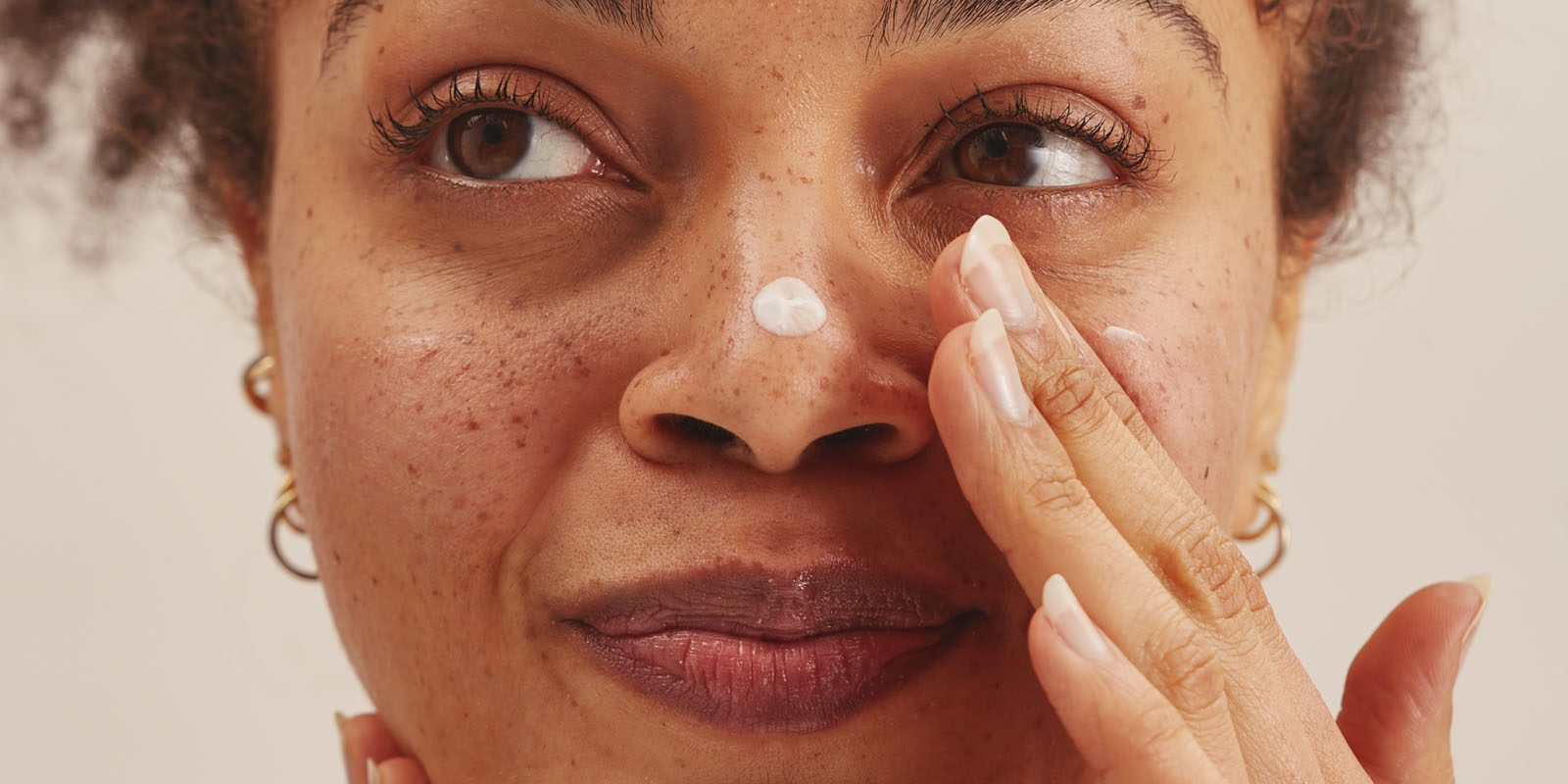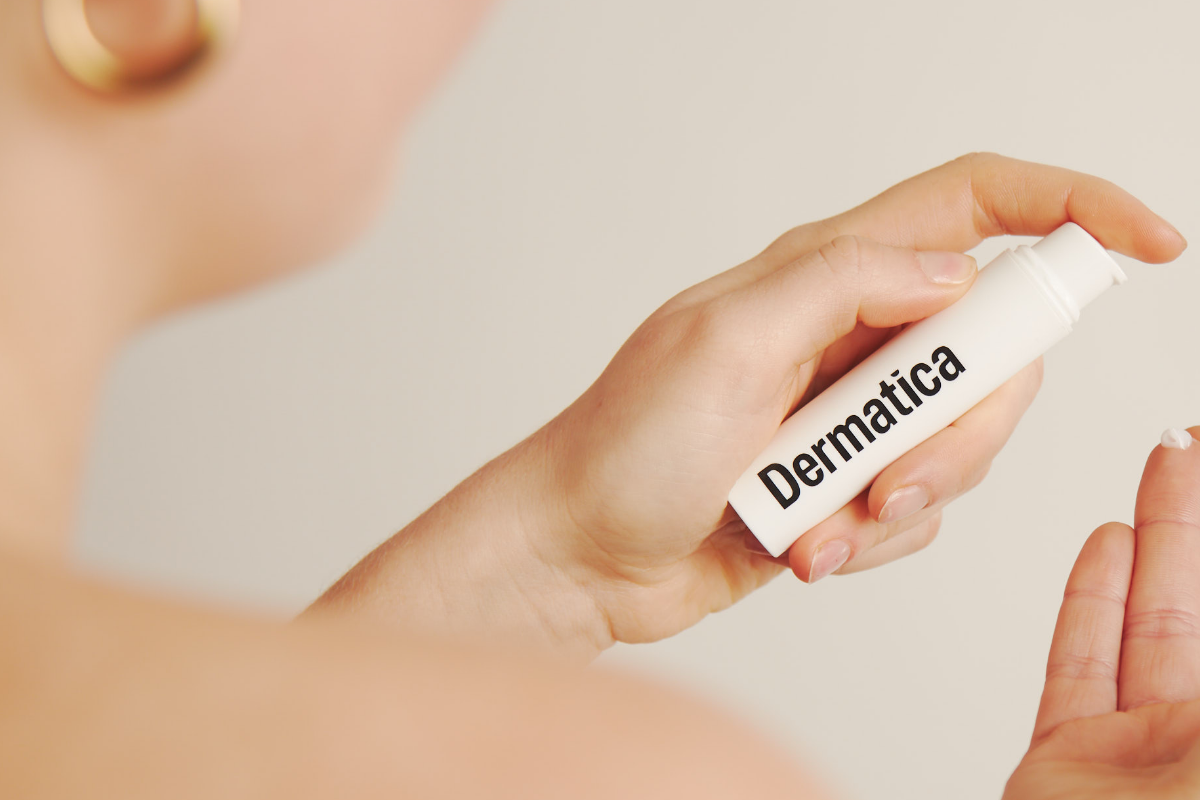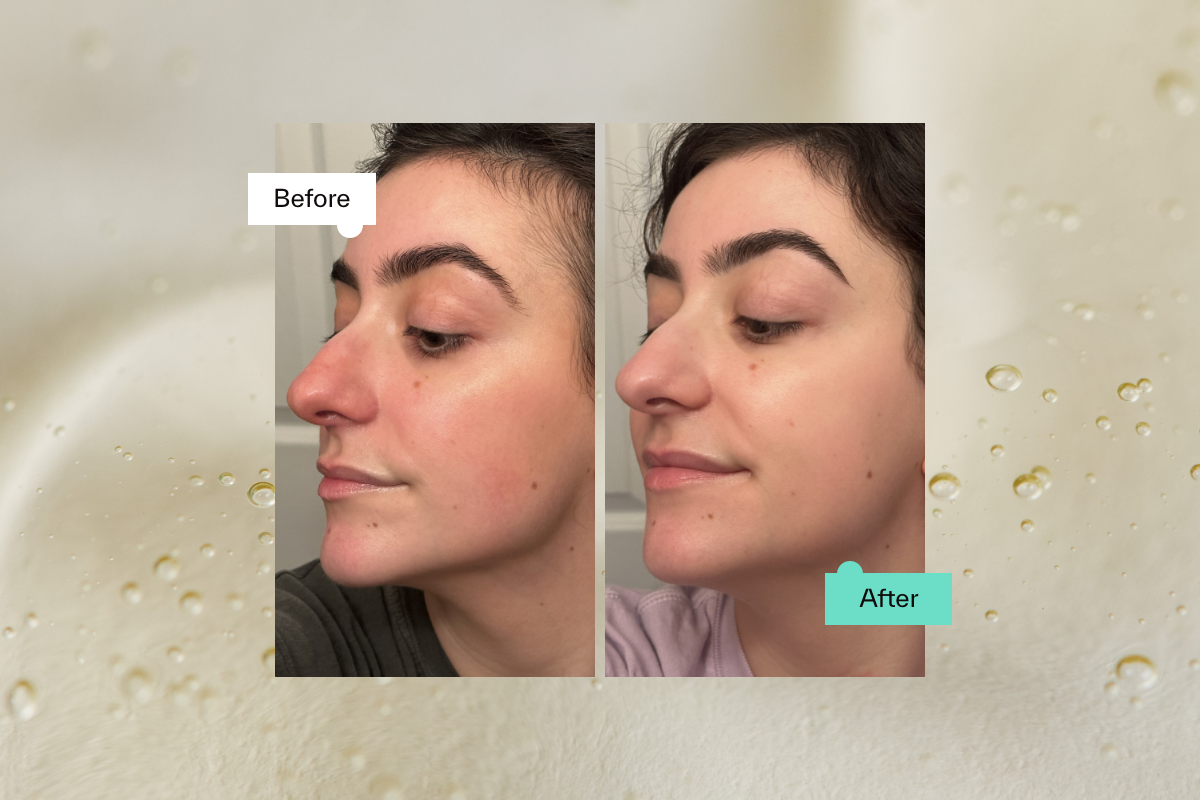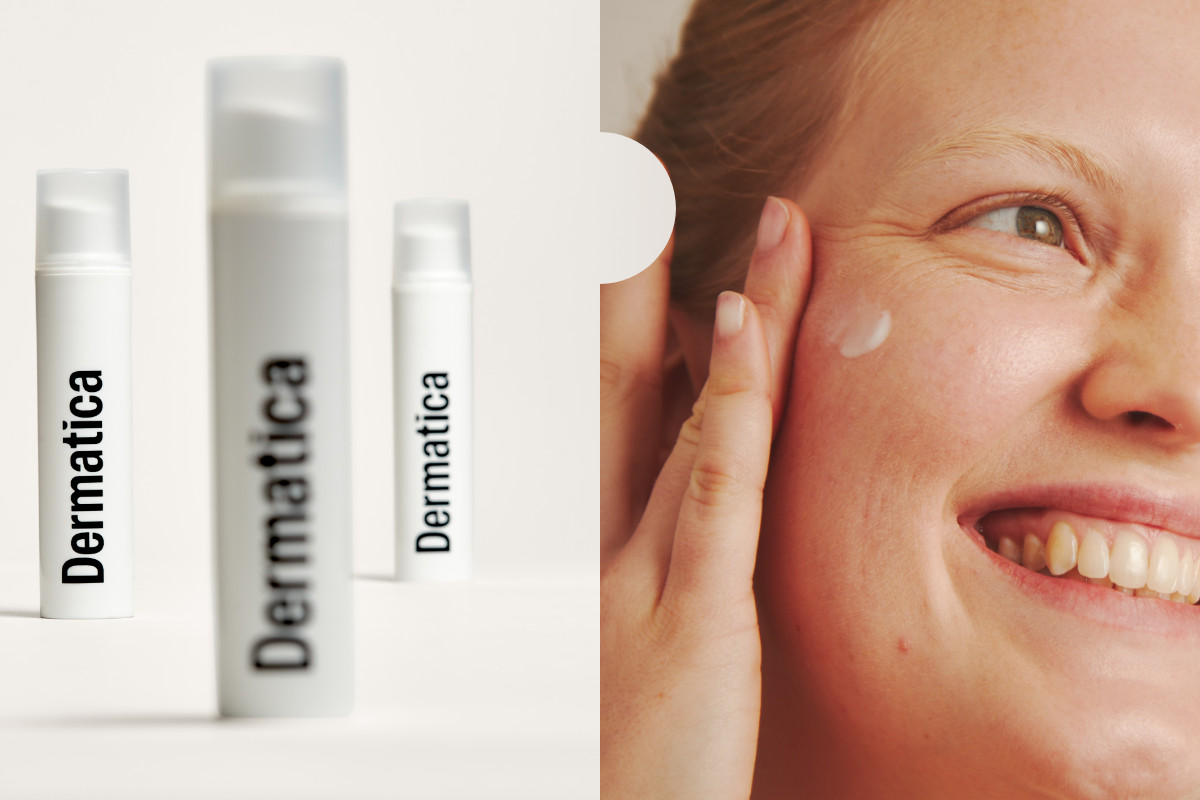Retinoids, and it’s most common form, tretinoin – have decades of research to support their ability to tackle unwanted signs of ageing, hyperpigmentation, melasma, acne and uneven skin texture.(1) But as you may have already discovered, results don’t happen overnight.
So, how long does it take? Whichever condition you’re targeting, this blog will go over what to expect along your journey, what the difference is between prescription retinoids and over-the-counter retinol, and what factors may speed up or hamper the time it takes until you see the results you’re hoping for.
Remember, your skin journey on retinoids is a marathon, not a sprint. It’s a commitment that will take a few weeks to see results, and should be kept up to see the longer-term benefits.
Timelines to see results depending on your skin condition
Acne
You’ll usually start seeing results after just four to eight weeks, however this will depend on your skin and vary from person to person. Retinoids work by promoting cell turnover, unclogging pores, and reducing the formation of acne lesions. Their anti-inflammatory properties alleviate redness and inflammation associated with acne, and by regulating sebum production, they create an unfavourable environment for acne bacteria. (2)
Post-Inflammatory Hyperpigmentation (PIH) and melasma
If you’re looking to fade PIH or melasma, the journey to visible results will often be slightly longer – usually within 12 weeks, but could be as long as six months in some cases. Retinoids like tretinoin help fade dark spots by encouraging skin cell turnover and renewal, and inhibiting the overproduction of melanin (the hormone that produces pigment in the skin). It’s really important that you avoid direct sun exposure as much as possible, and wear a broad-spectrum sunscreen every morning (no matter the weather,) as UV rays can cause your hyperpigmentation to darken – prolonging how long it takes to see results. (3)
Skin ageing
Tackling unwanted signs of ageing with retinoids requires long-term commitment, but the results are worth it. And although it’s never too late to see the benefits – the earlier you start a retinoid formula, the better. It’s much easier to prevent signs of ageing than it is to reverse them once they appear. Visible improvement can usually be seen within eight weeks, and a reduction in fine lines and wrinkles can be seen at around three to six months, with continued benefits like an overall more youthful glow over time. Collagen production is also boosted, enhancing your skin’s elasticity and firmness.(5)
Skin glow
The time it takes to achieve a radiant, youthful glow from retinoids will vary from person to person. Many of our subscribers notice their skin texture is smoother and more luminous within four to six weeks, but others may take 8 weeks or more to experience the full effect.(6)
Prescription vs. cosmetic skincare
Despite the fact that both retinoids and retinol are derived from Vitamin A, there are distinct differences between prescription retinoids and cosmetic retinol in skincare. The time it takes to see results will therefore also depend on which form you choose to use.
Prescription retinoids (like tretinoin)
Retinoids like tretinoin fall under the prescription skincare category because of their high potency. They’re an active form of Vitamin A (hence why they’re known as an active ingredient) so they start working as soon as they’re applied to the skin. Prescription retinoids are regulated by healthcare professionals and may yield more noticeable results, but there’s a higher likelihood of temporary side effects like dryness and peeling. These side effects should only last around 1-2 weeks. (6)
Cosmetic retinol
Retinol is the precursor to the active form of Vitamin A, so it needs to undergo conversion in the skin before it becomes active. It’s therefore milder and available over the counter, but can also take months rather than weeks to show noticeable results. Retinol can still contribute to your skin’s overall health, but for certain skin concerns, they may lack the potency you need to see your desired results.(7)
Factors that may be affecting your results
If you’ve been using a personalised retinoid formula, but haven’t been satisfied with the changes in your skin, several factors could be slowing down your results. Here are some common reasons why you might not see a noticeable difference, yet.
Consistency
Regular application is crucial. A break for a day or two here and there is fine (especially if you’re experiencing retinisation). But if you’re regularly skipping your application for days or weeks at a time, or using your formula inconsistently, this could delay or reverse your results.(8)
Your unique skin type
Everyone’s skin is unique, and different skin types react differently to tretinoin and retinoids more generally. If you’re a Dermatica subscriber, reach out to your dermatology team through your dashboard. Sometimes adjusting the concentration, or how frequently you use it, can increase results. Remember, with a Dermatica subscription, there is no limit to how many adjustments you can make to your formula for free.
Harsh skincare products
Pairing retinoids with exfoliating products like AHAs, BHAs and physical scrubs can put stress on your skin barrier and slow down your results. Avoid these ingredients and follow a simple routine that complements active ingredients, like the Dermatica daily essentials range. Or a routine that’s recommended to you by a dermatology professional.
If your skin barrier does become compromised, take a break from your retinoid formula and apply Restoring Ceramide Skin Balm to the affected areas until your barrier has healed.
What if I’m not seeing results from retinoids like tretinoin?
If you’re not seeing the results you’re looking for, don’t give up hope just yet. Try these steps before you stop completely.
Ask for advice from a dermatology professional
Reach out to your dermatologist, or if you’re a subscriber you can ask for advice from the dermatology team at Dermatica any time. Let us know how often you’re applying it, and what the other products are in your morning and evening routine. We’ll help you reassess your skincare and discuss potential adjustments to your formula, or suggest products to use that can get you back on track.
Adjust how often you apply it
If your skin is experiencing irritation like redness, swelling or soreness while on retinoids, this is a condition known as retinisation.(1) Take a break from your formula for a few days until these symptoms ease.
Hydration and Moisturisation
To keep your skin barrier healthy and functioning as it should, you need to keep it well hydrated, and moisturising is a critical step. Having a dry or dehydrated skin barrier means that certain vital processes in your skin can’t work as effectively as they should, and your skin could be at more risk of side effects from retinoids.(9) Combat dryness and peeling by using a gentle, hydrating moisturiser with ceramides to keep your skin barrier intact. Once your skin barrier has healed, you can resume your formula again.
Sun Protection
Broad-spectrum sunscreen is the most important step in your morning skincare routine, no matter what the weather is. Protect your skin from UV rays, especially when using tretinoin or retinoids, as these active ingredients can degrade rapidly by over 80% when they’re exposed to sunlight.(10) Plus, unprotected sun exposure is the leading cause of skin cancer and premature skin ageing, so make sure you’re always protected.
Conclusion
Using tretinoin, or any prescription retinoid, is a commitment. And understanding the timelines for results is a great way to both manage expectations, and ensure you know what to expect. Remember, achieving healthy, radiant skin is a marathon, not a sprint — so stay consistent and be patient, the results will be worth it. Already a Dermatica subscriber? Our team is here for you at every step of your journey. If you have any questions, remember you can always reach out to us through your dashboard. If you’re interested in getting a personalised retinoid formula for your skin concerns, start a free online consultation today.
References
1. Motamedi M, Chehade A, Sanghera R, Grewal P. A Clinician’s Guide to Topical Retinoids. Journal of Cutaneous Medicine and Surgery. 2021 Jul 22;26(1):120347542110350.
2. Kolli SS, Pecone D, Pona A, Cline A, Feldman SR. Topical Retinoids in Acne Vulgaris: A Systematic Review. American Journal of Clinical Dermatology. 2019 Jan 23;20(3):345–65.
3. Callender VD, Baldwin H, Cook-Bolden FE, Alexis AF, Stein Gold L, Guenin E. Effects of Topical Retinoids on Acne and Post-inflammatory Hyperpigmentation in Patients with Skin of Color: A Clinical Review and Implications for Practice. American Journal of Clinical Dermatology. 2021 Nov 9;
4. Bandyopadhyay D. Topical treatment of melasma. Indian Journal of Dermatology [Internet]. 2009 [cited 2020 Jan 26];54(4):303. Available from: https://www.ncbi.nlm.nih.gov/pmc/articles/PMC2807702/
5. Quan T. Human Skin Aging and the Anti-Aging Properties of Retinol. Biomolecules [Internet]. 2023 Nov 1;13(11):1614. Available from: https://www.mdpi.com/2218-273X/13/11/1614
6. Michalak M, Pierzak M, Kręcisz B, Suliga E. Bioactive Compounds for Skin Health: A Review. Nutrients. 2021 Jan 12;13(1):203.
7. Kong R, Cui Y, Fisher GJ, Wang X, Chen Y, Schneider LM, et al. A comparative study of the effects of retinol and retinoic acid on histological, molecular, and clinical properties of human skin. Journal of Cosmetic Dermatology [Internet]. 2015 Nov 18;15(1):49–57. Available from: https://onlinelibrary.wiley.com/doi/full/10.1111/jocd.12193
8. Mukherjee S, Date A, Patravale V, Korting HC, Roeder A, Weindl G. Retinoids in the treatment of skin aging: an overview of clinical efficacy and safety. Clinical interventions in aging [Internet]. 2006;1(4):327–48. Available from: https://www.ncbi.nlm.nih.gov/pmc/articles/PMC2699641/
9. Rosso JD, Zeichner J, Alexis A, Cohen D, Berson D. Understanding the Epidermal Barrier in Healthy and Compromised Skin: Clinically Relevant Information for the Dermatology Practitioner. The Journal of Clinical and Aesthetic Dermatology [Internet]. 2016 Apr 1;9(4 Suppl 1):S2–8. Available from: https://www.ncbi.nlm.nih.gov/pmc/articles/PMC5608132/
10. Rosso JD, Harper J, Pillai R, Moore R. Tretinoin photostability: comparison of micronized tretinoin gel 0.05% and tretinoin gel 0.025% following exposure to fluorescent and solar light. The Journal of clinical and aesthetic dermatology [Internet]. 2013 [cited 2024 Jan 18];6(2):25–8. Available from: https://www.ncbi.nlm.nih.gov/pmc/articles/PMC3579485/
Ash Sharma
Dr Ashwin Sharma is a medical doctor and writer with a particular interest in health technology, artificial intelligence and medical weight loss. He completed his training at the University of Leicester and Imperial College London, and has since been exploring the intersections of medicine, technology, and communication.





